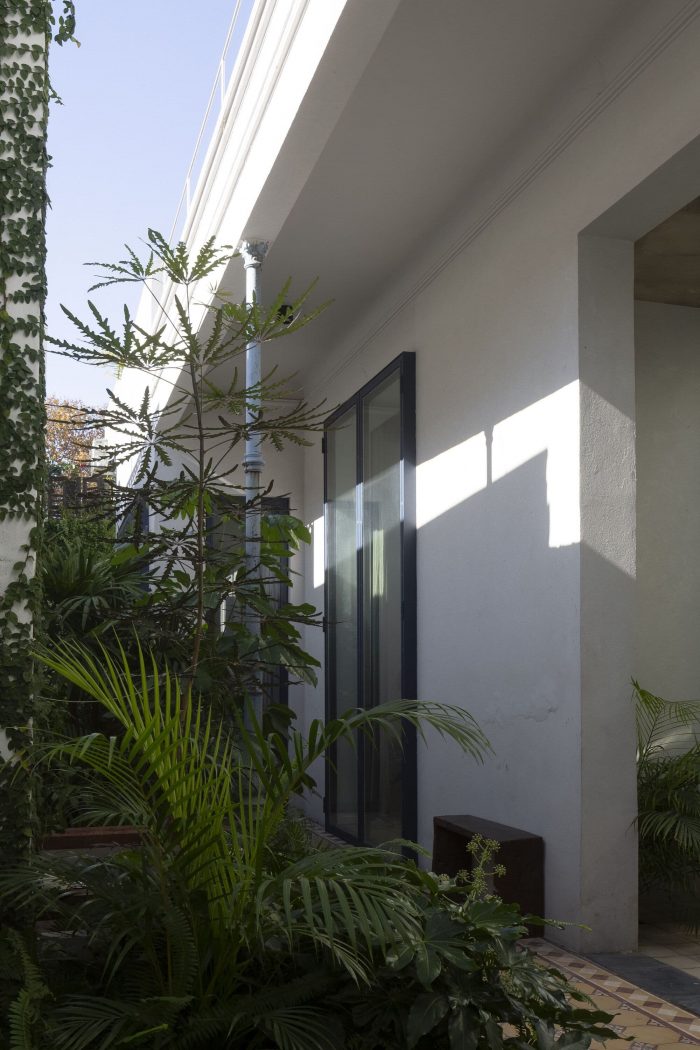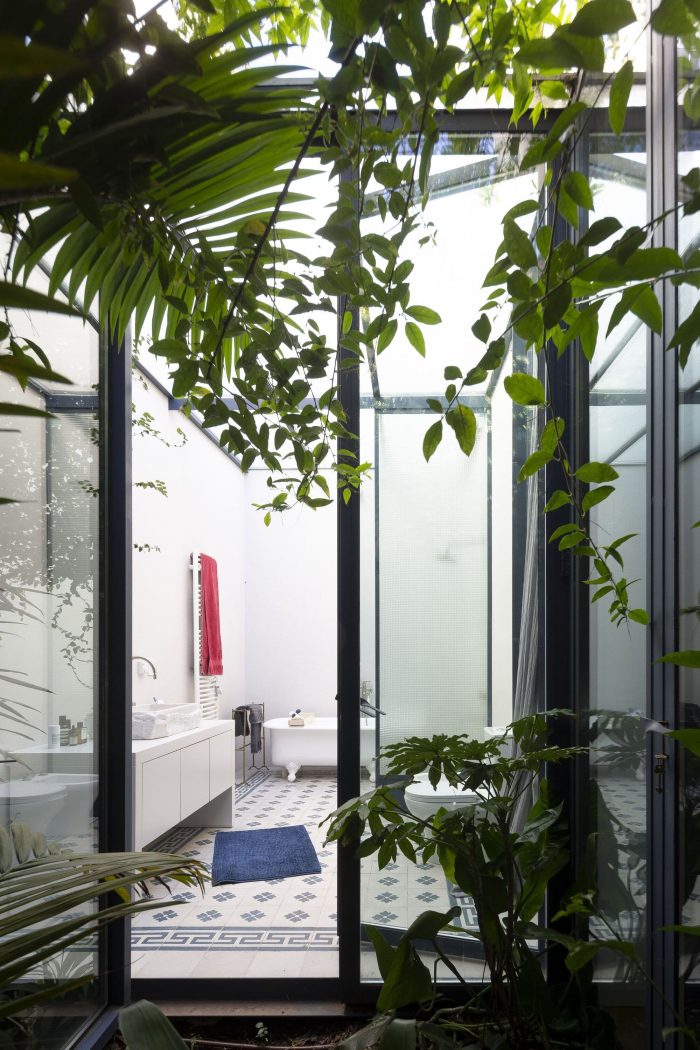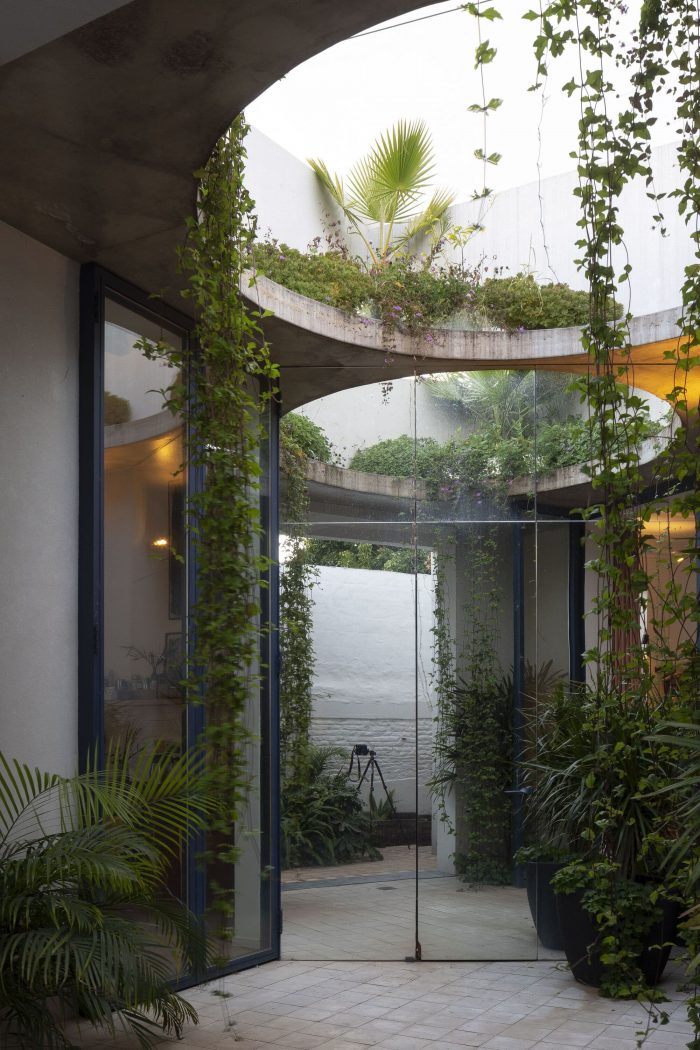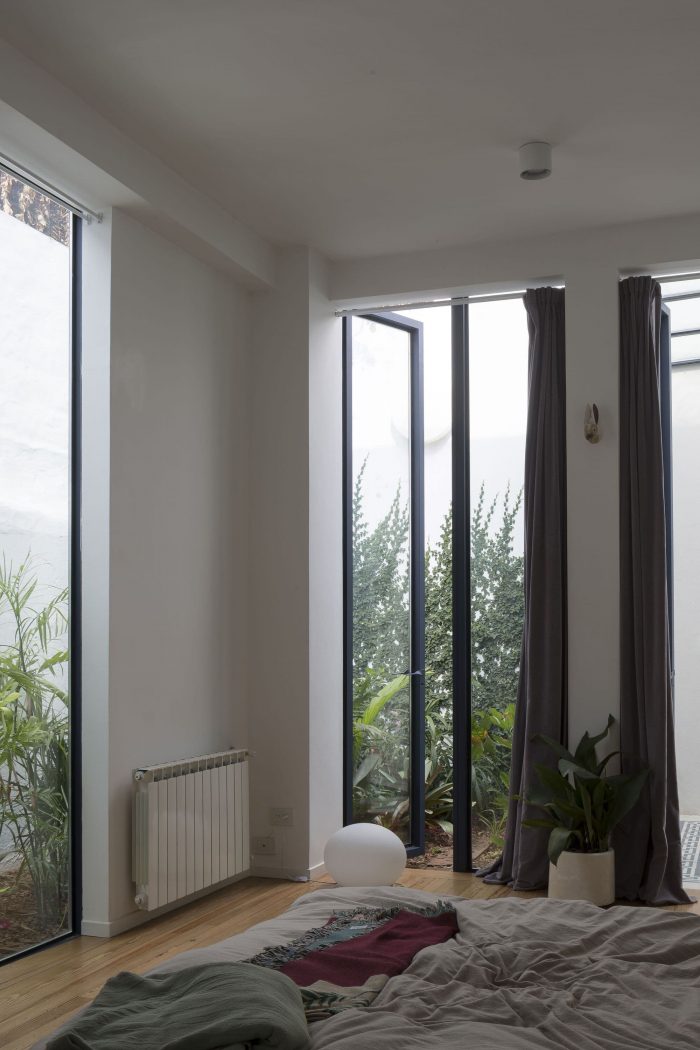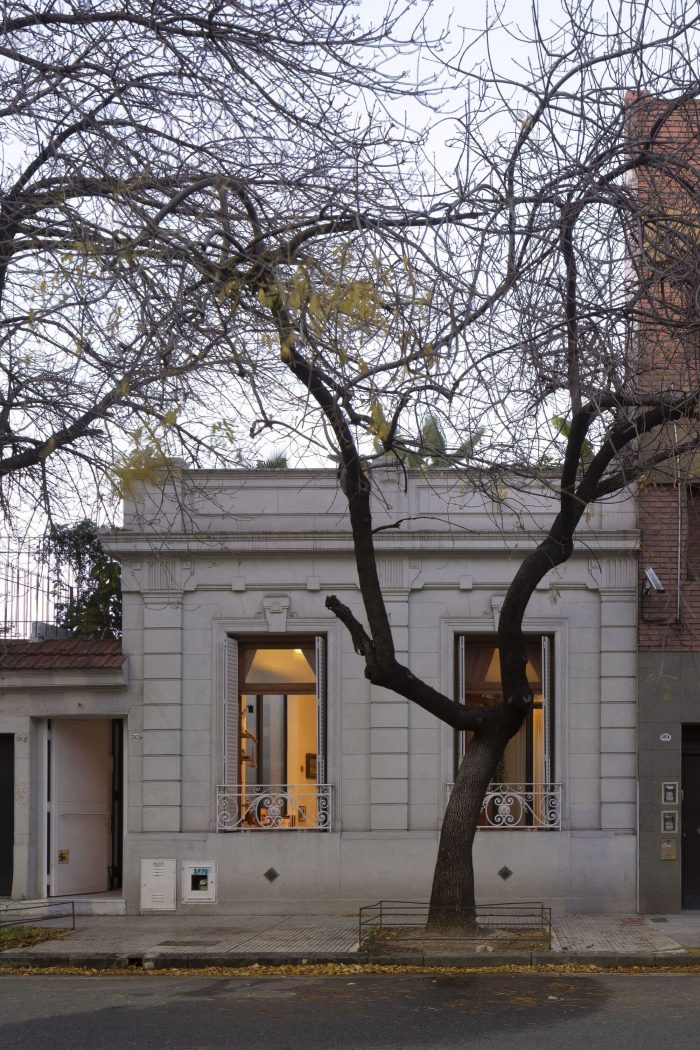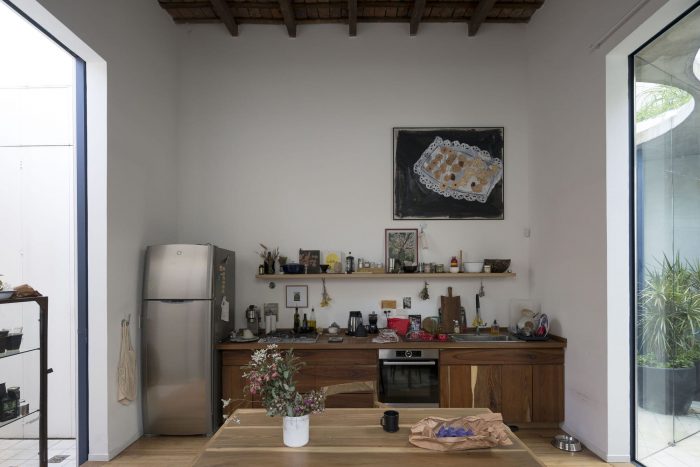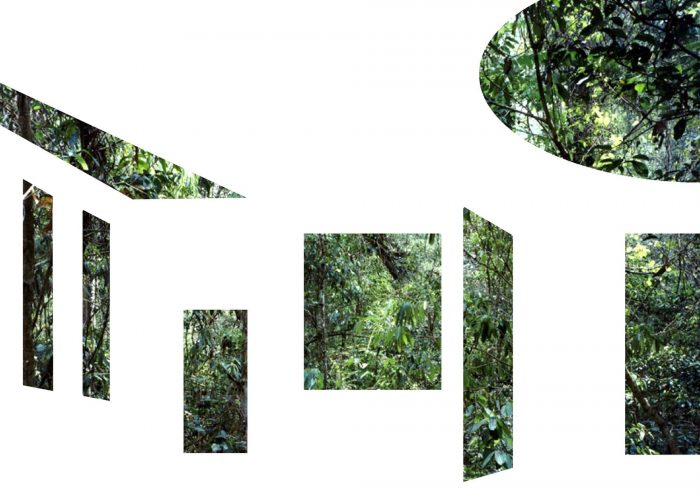如果我们暂时取消语境,从字面上理解密斯的名言 “少即是多”,我们最终会认为建筑的主要关注点应该是拆除而不是建造。这当然是一个不能作为普遍教条认真对待的论点,但昂格尔斯和库哈斯已经在他们的开创性项目 “柏林绿色群岛 “中探讨了在某些特定情况下,”空 “是多么有用。我们认为Casa Chorizo项目可能是其中之一。
If for a moment we decontextualize and take the famous Mies’ quote “less is more” literally, we could end up arguing that the primary preoccupation of architecture should be demolishing and not building. It is of course an argument that can’t be taken seriously as a universal dogma, but Ungers and Koolhaas have already explored in their seminal project Berlin as a Green Archipelago, how useful voiding could be in some specific scenarios. We thought that The Casa Chorizo project could be one of them.
当一个客户来找我们,要求把一个废墟中的老房子翻新成他的住宅,”不增加任何东西”,我们建议做 “比什么都少”。我们认为,这所房子实际上对于他所要使用的用途来说太大了,最合理的做法是把房子的内部空间变小。在一个受建筑平米数最大化驱动的社会中,他接受这个观点是很大胆的。然而,他明白这种行为对于其他形式的非人类生活和更有效地利用能源和材料是多么有价值。该项目在现有结构上做了一系列的切口,重新组织了房屋的功能和空间质量。
When a client came to us asking to refurbish an old casa chorizo in ruins into his dwelling “without adding anything”, we proposed doing “less than nothing”. We thought that the house was actually too big for the use he was going to give it and that the most logical thing to do was to make the house’s interior space smaller. It was daring on his part to accept this in a society driven by the maximization of the built square meter. Still, he understood how valuable this act could be regarding other forms of non-human life and more efficient use of energy and materials. The project was structured in a series of incisions on the existing structure that reorganized the functioning and spatial qualities of the house.
通过减少现有的结构足迹,casa chorizo项目可以被视为一种努力,使建筑最大限度地减少能源和材料的使用,试图建立一个环境,为其他形式的生命的出现留下空间,在布宜诺斯艾利斯这个城市是世界上最不绿色的城市之一,人均只有约1.8平方米的绿色空间。
By reducing the existing structural footprint, the casa chorizo project can be seen as an effort to make an architecture that minimizes the use of energy and materials in an attempt to build an environment that leaves space for other forms of life can emerge, in Buenos Aires a city that is among the least green cities in the world, with only about 1.8 square meters per capita of green space.
这座房子是一对年轻夫妇、一只狗和众多植物和昆虫的住所,它们一点一点地在这个空间里繁殖。房子的内部空间被一个圆形的天井所分割。在房子的前面留有一个更多的公共房间,与更多的私人区域断开联系。房子的尽头是一个玻璃浴室,在那里你可以看着天空洗澡。露台大部分被绿色屋顶覆盖,一旦种植,就会通过熵的过程生长。在城市范围内,该项目可以被看作是一个小型的绿洲,谦逊地帮助建立城市的生物多样性和生物量。在人的尺度上,房子可以被理解为在密集的大都市中心建立一个绿色家庭景观的尝试。
The house functions as a dwelling for a young couple, a dog, and a multitude of plants and insects that little by little populate the space. The interior space of the house is divided by a circular patio. A more public room is left in the front of the house disconnected from the more private areas. The house ends with a glassed bathroom where you can take a shower looking at the sky. The terrace is mostly covered by a green roof that was left to grow through an entropic process once planted. At an urban scale, the project can be seen as a small green oasis that humbly helps in building up the city’s biodiversity and biomass. At a human scale, the house can be understood as an attempt to build a green domestic landscape in the center of a dense metropolis.
Architects: Giusto Van Campenhout
Area : 115 m²
Year : 2018
Photographs :Javier Agustín rojas
Construction & Technical Developpement : Marcos Asa
Team : Nelson Van Campenhout, Santiago Giusto, Dario Graschinski
City : Buenos Aires
Country : Argentina



